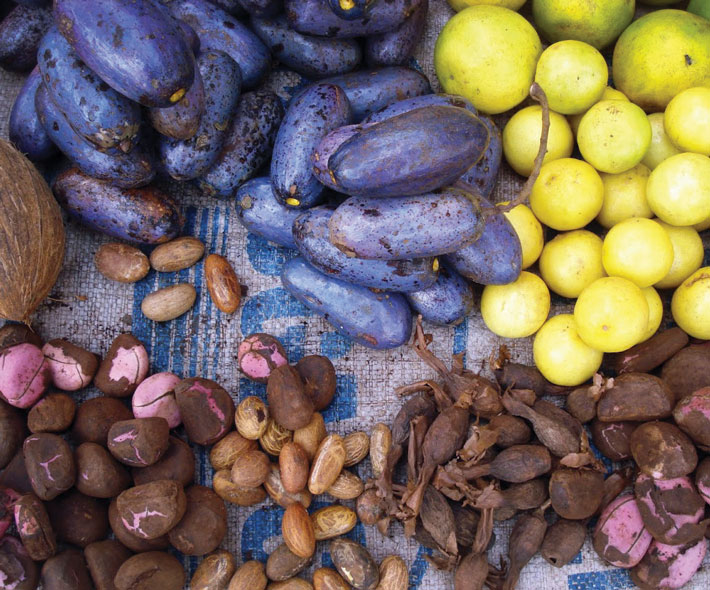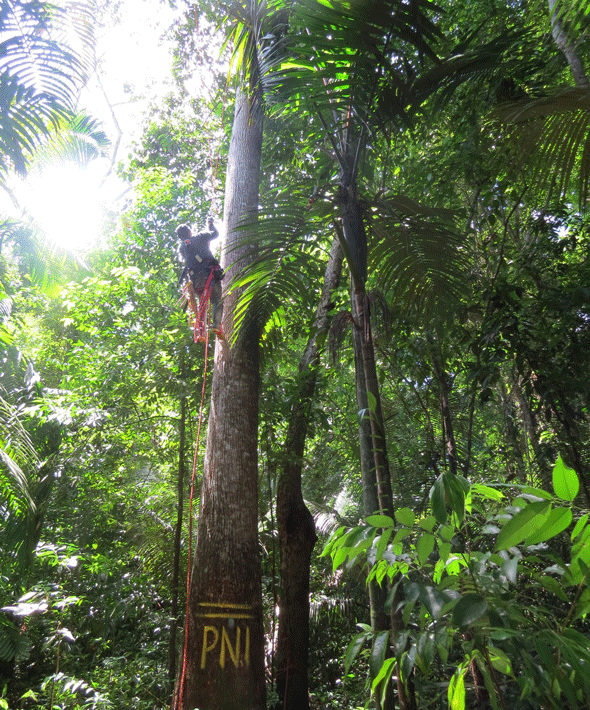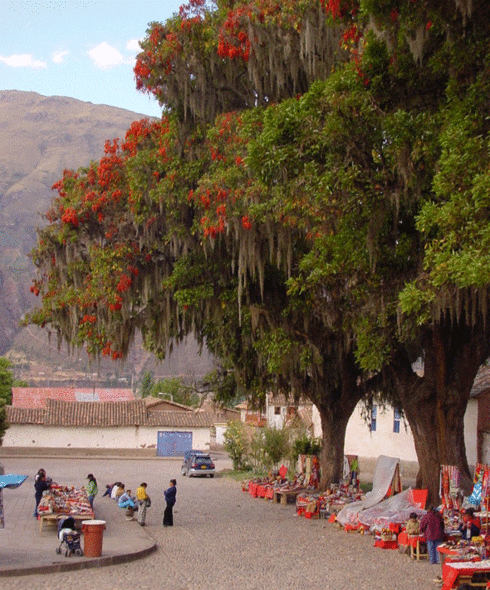Forest fact or fiction
Last Wednesday marked the seventh International Day of Forests, an occasion to celebrate our forests and raise awareness of the many issues our trees face. Bioversity International’s Forest Genetic Resources team focuses on analyzing the threats to, and supporting conservation and sustainable use of the diversity within tree species, which are at the foundation of many Sustainable Development Goals.
The organization occupies a unique niche, focusing on the conservation and sustainable use of the diversity within tree species that are important for people, and analyzing the threats and their genetic resources. Read on to test your own knowledge on forests, trees and restoration, and learn about Bioversity International’s research.
Fact or fiction? Forests and trees reduce the productivity and profitability of agricultural landscapes
FICTION
Trees are a vital component of sustainable agriculture. Forest and tree products enhance nutrition and food security and improve well-being. Trees produce food, fibre, fuel, timber and other products.
Bioversity International’s Forest Genetic Resources team conducts research around the world to address threats to the diversity of food-producing tree species. These priority species have the potential for reducing the risk of hunger, malnutrition, and poverty. Check out how Uzbek farmers get a livelihood boost from local trees.
Trees help provide shelter, soil and water conservation, and facilitate carbon sequestration, improve biodiversity, and enhance pollination. Tree biodiversity is also essential for a landscape’s resilience. Diversity provides ecosystem services that are vital for restoring and increasing the productivity, adaptive potential and resilience of agricultural and forest ecosystems on which people depend.

Trees are a vital component of sustainable agriculture. Forest and tree products enhance nutrition and food security and improve well-being. Trees produce food, fibre, fuel, timber and other products.
Bioversity International’s Forest Genetic Resources team conducts research around the world to address threats to the diversity of food-producing tree species. These priority species have the potential for reducing the risk of hunger, malnutrition, and poverty. Check out how Uzbek farmers get a livelihood boost from local trees.
Trees help provide shelter, soil and water conservation, and facilitate carbon sequestration, improve biodiversity, and enhance pollination. Tree biodiversity is also essential for a landscape’s resilience. Diversity provides ecosystem services that are vital for restoring and increasing the productivity, adaptive potential and resilience of agricultural and forest ecosystems on which people depend.

The Bioversity International Initiative on Productive and Resilient Farms, Forests and Landscapes studies how both agricultural and wild biodiversity can increase productivity and livelihood benefits. Discover the new findings of a recent research conducted by Bioversity International’s Jérôme Duminil on strengthening the livelihoods of African rural and urban people using indigenous fruit tree species.
Fact or fiction? Restoring degraded lands is easy! If we leave them alone they will recover on their own
FICTION

Forest landscape restoration is a critical and on-going process. It is essential for not only alleviating soil erosion and climate change, but also in promoting food security and biodiversity and ensuring access to clean water. To achieve successful restoration of degraded lands, and deliver the many benefits of a diverse forest landscape, we need to carefully select the appropriate species of trees and seed sources suitably matched to restoration sites. Further, these trees need to be suitable for the local conditions. Relying on natural processes to restore degraded forest landscapes will not always lead to a successful regeneration of the most important, valuable, or beneficial tree species.
Bioversity International is dedicated to generating successful landscape restoration through our research and creation of decision support tools, which highlight the importance of tree biodiversity for resilient restoration. In the largest landscape level evaluation of seed dispersal among tropical trees, led by Bioversity International Forest Genetic Resources and Restoration Scientist Chris Kettle, a detailed study shows that even with highly mobile seed dispersers sometimes nature needs a little help.
Fact or fiction? Restoration projects that specifically aim at mitigating climate change don’t have the best rate of success
FACT
Such projects tend to give the least attention to what exactly is planted and are, therefore, at highest risk of failure. Careful sourcing and selection of seeds is crucial, especially when the main goal of the project is to offset climate change.
Additionally, restoration practitioners often prefer the use of 'local' seeds for restoration. These are usually sourced within a few kilometers of the restoration site. It is commonly assumed that such seed sources are best adapted to the site conditions. However, this is not always the case. Local populations of trees may be highly fragmented and very small. Tree populations need to be large and well connected to maintain genetic variation for survival, good growth, and long-term viability. It is this diversity that enhances the population’s resistance to climate change.
Fact or fiction? Gender matters are not pertinent when it comes to forest restoration
FICTION
Gender equality must be central in restoration to avoid perpetuating inequalities, to incentivize women and men to contribute to restoration efforts and to provide greater opportunities and enhanced well-being for everyone alike. Engaging with the diversity of people who have shaped the biodiversity and the multiple ways they manage and use it is essential for understanding and conserving that diversity effectively. Bioversity International’s participatory research on gender and forest genetic resources focuses on women’s and men’s distinct and complementary sets of knowledge, skills, practices and preferences related to forest management and conservation, and on gendered rights to access and benefit from trees and their products.
Discover the benefits of gender-responsive participatory research for sustainable forest management.

Fact or fiction? Trees make cities more sustainable
FACT

Even in urban areas, trees and their diversity are vital for ensuring resilience to environmental changes, enhancing food security and nutrition, and sustaining livelihoods.
Food products foraged from urban forests help ensure food security, are a key element of urban agriculture, and are critical for local livelihoods and ecosystems. Fruits, nuts, leaves, and insects collected from trees can all be used as a source of food and for production of medicines to be used in the home.
Forests in and around urban areas can also help reduce soil erosion and improve water quality. They can safeguard watersheds by storing water in their branches and the soil. Moreover, tree cover can reduce damaging seasonal flooding and run-off containing pollutants, which are common to urban areas.
Lastly, urban greening can cool cities, reducing excessive use of air conditioning and overall energy consumption. Trees can also function as excellent air filters, further offsetting increased emissions from urban areas.
Fact or fiction? Urban consumer demand is weakening the genetic bases of food tree species
FACT
Driven by urban demand, selective pressures from farmers and consumers is weakening the genetic diversity of food tree species. This affects their adaptive capacity to withstand environmental changes.
The growing urban population poses a series of challenges to food and nutrition security. Therefore, smallholders and the urban poor would greatly benefit from the establishment of resilient food systems that integrate and strengthen rural-urban linkages.
This research is supported by the CGIAR Research Program on Forests, Trees and Agroforestry and the CGIAR Fund Donors.
